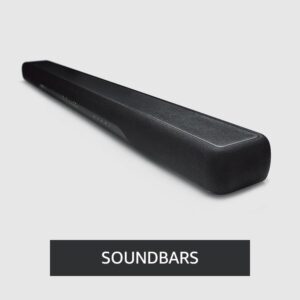How to Project Image onto the Canvas Without Projector? | 5-Methods
Embarking on a journey of artistic expression often involves translating visions onto a canvas. While projectors offer a convenient means to enlarge images for detailed rendering, not every artist has the luxury of owning one. This guide unveils various creative and budget-friendly methods for projecting images onto a canvas without relying on a projector.
Table of Contents
How To Project Image With Lightbox Method:
The lightbox method is a classic technique that artists have employed for decades to transfer images onto canvases with precision and ease. A lightbox is essentially an illuminated box featuring a glass pane on top. While traditional lightboxes may be too small for larger canvases, this method can be adapted by printing an enlarged copy of the reference image.
Materials Needed:
- Lightbox
- Enlarged printout of the reference image
- Canvas
- Pencil or fine-tip marker
- Eraser (optional)
- Paints or other preferred artistic medium
The Lightbox Method | Step-by-Step Guide:
- Print an Enlarged Copy: Begin by printing a scaled-up version of the reference image. This can be done using graphic design software or by taking the image to a printing service that offers size customization.
- Set Up the Lightbox: Place the printed image on the glass pane of the lightbox. Ensure that the lightbox is in a position where you can comfortably trace the image onto the canvas.
- Turn on the Light Source: Activate the light source within the lightbox. The illumination will make the lines of the image visible through the paper, allowing you to trace with accuracy.
- Trace the Outlines: With the lightbox providing a clear view of the reference image, start tracing the outlines onto the canvas. Pay close attention to details and nuances in the image, capturing them accurately in your traced lines.
- Replicate and Refine: Once the initial tracing is complete, you can replicate the drawing on the canvas. This method allows for multiple redraws and refinements, enabling artists to enhance their skills and experiment with different variations of the same image.
The lightbox method is particularly effective when precision and detail are crucial in the artistic process. It provides a controlled environment for tracing, eliminating the guesswork associated with freehand replication. While traditional lightboxes may have limitations regarding canvas size, the adaptation of printing an enlarged image makes this method accessible for artists working on larger surfaces.
Advantage:
- The lightbox method allows for precise tracing of intricate details from the reference image onto the canvas, ensuring accuracy in reproducing complex compositions.
- While traditional lightboxes may be smaller, the method is adaptable. Enlarged prints can be used for tracing, offering flexibility in transferring images to canvases of various sizes.
- The ability to replicate and refine drawings multiple times on the lightbox serves as a valuable training tool for artists, enhancing their skills and techniques.
How To Project Image With DIY Projector:
For artists on a budget or those who enjoy a hands-on approach to their craft, the DIY Projector method provides an innovative and cost-effective solution for projecting images onto a canvas without the need for a professional projector. By utilizing common household items, this method allows for creativity to flourish without breaking the bank.
Materials Required:
- Phone or Flashlight.
- Magnifying Glass.
- Cardboard.
- Mirror.
- Matte Black Paper.
- Scissors, Tape, or Glue.
DIY Projector | Step-by-Step Guide:
- Cut a Window in the Cardboard: Begin by cutting a window in the cardboard, ensuring it is on the larger side. This window will be the frame through which the image will be projected.
- Attach the Magnifying Glass: Position the magnifying glass over the window in the cardboard, securing it in place using tape or glue. Ensure that the magnifying side is facing inward towards the cardboard.
- Insert the Mirror: Place a small mirror within the cardboard structure, angled to redirect the light from the phone or flashlight towards the magnifying glass.
- Create a Light-Tight Enclosure: Cover the sides of the cardboard structure with matte black paper, creating a light-tight enclosure. This step is crucial for enhancing the contrast of the projected image.
- Place the Phone or Flashlight: Position the phone or flashlight behind the magnifying glass, ensuring that the light source is directed towards the mirror and subsequently through the magnifying glass.
- Project the Image: With the DIY projector assembled, place the reference printout or image in the window of the cardboard. Turn on the flashlight or use the phone’s torch function. The magnifying glass will project a fairly magnified or enlarged image onto the canvas or wall.
Advantage:
- Creating a DIY projector is a cost-effective alternative, making image projection accessible to artists on a budget.
- Artists can customize the size and design of their DIY projector based on the canvas dimensions and personal preferences.
- The required materials, such as a phone, magnifying glass, and cardboard, are commonly found at home, making the DIY projector method easily accessible.
How To Project Image With Grids for Precision:
When it comes to achieving precision and accuracy in transferring images onto a canvas without a projector, the Grids method proves to be a meticulous and reliable technique. This manual approach involves creating a grid on both the reference image and the canvas, allowing artists to break down complex compositions into manageable sections for detailed reproduction.
Materials Required:
- Canvas
- Reference Image
- Ruler
- Pencil
- Eraser
- Painter’s Tape (Optional)
- Work Surface
- Printout of Reference Image
Grids for Precision | Step-by-Step Guide:
- Select a Canvas with Similar Ratio: Begin by choosing a canvas that shares a similar aspect ratio with the reference photo. This ensures that the proportions remain consistent during the transfer process.
- Draw One-Inch Squares on the Canvas: Using a ruler and a pencil, draw a grid of one-inch squares on the canvas. The number of squares will depend on the complexity and size of the reference image.
- Draw a Corresponding Grid on the Reference Photo: Replicate the grid pattern on the reference photo, ensuring that the squares align with those on the canvas. This step requires patience and precision, as accuracy is crucial for a successful transfer.
- Fill Each Square on the Canvas: Focus on one square at a time. Examine the content within each square of the reference photo and reproduce it in the corresponding square on the canvas. This methodical approach ensures that no details are overlooked.
- Continue Section by Section: Progress through the grid sections systematically, replicating the details from the reference image onto the canvas. This step-by-step process allows for better control and accuracy in capturing the entire composition.
- Refine and Connect Grid Sections: Once all grid sections are filled, step back and assess the overall continuity of the artwork. Begin refining and connecting the individual sections to create a cohesive and seamless representation of the reference image.
Advantage:
- Grids provide a systematic approach, ensuring precision and accuracy in transferring images onto the canvas, particularly beneficial for detailed compositions.
- The method is scalable to accommodate different canvas sizes, allowing artists to adapt the size of grid squares based on the level of detail in the reference image.
- Drawing grids requires attention to detail, contributing to skill development and enhancing an artist’s observational abilities.
How To Project Image With Transfer Paper Technique:
The Transfer Paper Technique offers artists a straightforward and effective method to transfer images onto a canvas without the need for a projector. This approach employs transfer paper, which is readily available and easy to use. The technique allows for precise tracing of images onto the canvas, making it an ideal choice for artists seeking accuracy and convenience in their creative process.
Materials Required:
- Canvas
- Reference Image
- Transfer Paper
- Printout of Reference Image
- Tape
- Pencil or Pen
- Eraser
Transfer Paper Technique | Step-by-Step Guide:
- Prepare the Canvas: Ensure the canvas is clean, primed, and ready for the transferred image.
- Select and Print the Reference Image: Choose a reference image and print a clear copy in the desired size.
- Position the Reference Image: Tape the reference image to the canvas in the desired location. Ensure it stays in place during the transfer process.
- Place the Transfer Paper: Position the transfer paper with the graphite-coated side facing down onto the canvas. Align it with the reference image.
- Secure Both Layers: Tape the transfer paper to the canvas, securing both the reference image and the transfer paper in place.
- Trace the Image: Using a pencil or pen, trace the outlines of the reference image onto the canvas. Apply moderate pressure to transfer the graphite from the paper to the canvas.
- Check the Transfer: After tracing, carefully lift one corner of the transfer paper to check the transferred image. Ensure that all desired details have been successfully transferred.
- Complete the Tracing: Continue tracing the entire image until all necessary details are transferred onto the canvas.
- Remove Transfer Paper and Reference Image: Once tracing is complete, carefully remove the transfer paper and the reference image from the canvas.
- Refine and Complete: Review the transferred image on the canvas and refine any areas that may require adjustments. Complete the artwork with additional detailing and color as needed.
Advantage:
- The transfer paper technique offers a precise and detailed transfer of images onto the canvas, capturing intricate details with accuracy.
- This method is user-friendly and suitable for artists of various skill levels, providing a straightforward approach to image transfer.
- Transfer paper works well with different surfaces, offering versatility for various artistic projects beyond canvas.
How To Project Image With Window Projection:
Window Projection is a simple and budget-friendly method for transferring images onto a canvas. This technique utilizes natural light, such as daylight or sunlight, to project the image onto the canvas, eliminating the need for a projector. It’s a versatile approach, especially suitable for larger canvases, and requires minimal materials.
Materials Required:
- Canvas
- Reference Image
- Thin Canvas Paper (Optional)
- Tape
- Pencil or Pen
Window Projection |Step-by-Step Guide:
- Prepare the Canvas: Ensure the canvas is clean, primed, and ready for the transferred image.
- Select and Print the Reference Image: Choose a reference image and print a clear copy in the desired size.
- Tape the Reference Image: Tape the reference image to the window, ensuring it stays in place during the tracing process.
- Place the Canvas Paper: If using a thinner canvas paper, tape it to the window on the opposite side of the reference image. This allows more sunlight to pass through and makes tracing easier.
- Position the Canvas: Place the canvas on a stable surface, directly opposite the taped reference image. Ensure that it receives ample sunlight or daylight.
- Trace the Image: Using a pencil or pen, trace the outlines of the reference image onto the canvas paper. The natural light passing through the window will project the image onto the canvas.
- Adjust for Visibility: If necessary, adjust the position of the canvas or reference image to improve visibility and clarity during the tracing process.
- Complete the Tracing: Continue tracing until the entire image is transferred onto the canvas paper.
- Remove Canvas from the Window: Carefully detach the canvas from the window, ensuring that the traced image remains intact.
- Refine and Complete: Review the transferred image on the canvas paper, refining details or adding additional elements as needed to complete your artwork.
Advantage:
- Window projection is a budget-friendly method, utilizing natural light and requiring minimal materials for image transfer.
- The method is adaptable to various canvas sizes, making it versatile for different artistic projects.
- Window projection is accessible to artists of all skill levels, requiring only basic materials and utilizing natural light.
Conclusion:
While the use of dedicated projectors guarantees optimal results, these budget-friendly alternatives can aid artists in honing their skills and bringing their visions to life. From the traditional lightbox method to the ingenuity of a DIY projector, each technique offers a unique approach to image projection without the need for a costly investment.
Artists can experiment with these methods based on their preferences and available resources. Whether tracing with precision using grids or enjoying the simplicity of natural light through a window, the key is to find a technique that resonates with the individual artist’s style and vision.
By embracing these creative alternatives, artists can break free from the constraints of expensive equipment and focus on unleashing their creativity onto the canvas, one traced image at a time.
FAQs | How to Project Image onto the Canvas Without Projector
Q1: What alternative methods are there for projecting images onto a canvas without using a projector?
A1: There are several alternative methods that artists can use for image projection without a projector. These include the Lightbox Method, DIY Projector, Grids Method, Transfer Paper Technique, and Window Projection.
Q2: How does the Lightbox Method contribute to precision and versatility in image transfer?
A2: The Lightbox Method excels in providing precision by allowing artists to trace intricate details from a reference image onto the canvas. It is versatile as it can accommodate different canvas sizes by using enlarged prints for tracing.
Q3: What makes the DIY Projector a cost-effective and customizable option for artists?
A3: The DIY Projector is cost-effective as it involves creating a projector using everyday items. It’s customizable, allowing artists to tailor the size and design of the DIY projector based on their canvas dimensions and preferences.
Q4: How does the Grids Method contribute to precision, scalability, and skill development in image transfer?
A4: The Grids Method ensures precision by breaking down complex compositions into manageable sections. It is scalable, allowing artists to adapt the size of grid squares based on canvas dimensions. This method also contributes to skill development through attention to detail.
Q5: What advantages does the Transfer Paper Technique offer in terms of precision, ease of use, and versatility?
A5: The Transfer Paper Technique provides precision by allowing for detailed tracing onto the canvas. It is user-friendly, suitable for artists of varying skill levels due to its straightforward approach. Additionally, it is versatile as transfer paper works well with various surfaces beyond canvas.

Author: Baqarrasheed
I know all about home theater items! I have been doing this for more than three years now. I am good with things like sound systems, TVs, projectors, and all that cool entertainment gear. I like to help folks by testing and talking about these gadgets on Hometheaterjournal. I want to make sure everyone can create an awesome entertainment setup at home without any confusion.
I write the creative content for HometheaterJournal.






















